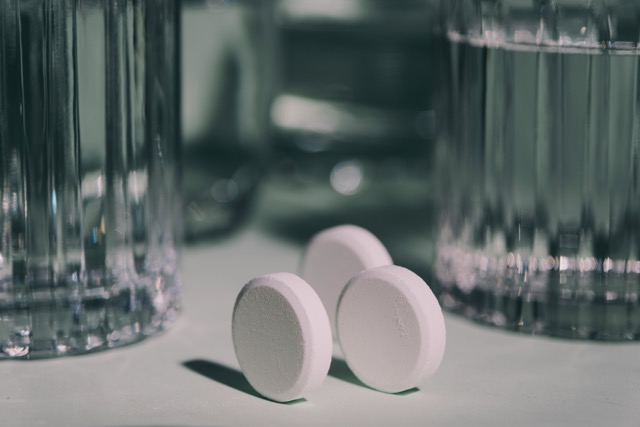Two minutes of intense physical activity can help us live longer
Even short, intensive training sessions can have a positive effect on our life expectancy

Mary Markevich
When it comes to our health, a little exercise is better than none at all. But how little is a “little” and how often of that little should you do? These questions are obviously also of concern to researchers, as studies repeatedly prove how valuable even short sessions of physical activity are. Newly published research in this area has shown that a series of two-minute, high-intensity training sessions throughout the week that can increase life expectancy, as this lifestyle is associated with a lower risk of all-cause mortality.
It is often not easy to find time for longer sporting activities. The recent findings on how even small units can promote our health are therefore particularly interesting. These findings include that interrupting sedentary work with “activity snacks” can help maintain muscle mass and brain volume in old age. These can be simple exercises with your own body weight, such as doing a few push-ups, doing squats for a minute, or getting into the habit of quickly taking the stairs wherever instead of taking the lift.
New research focuses on solutions for people who have little time to move. The authors relied on the long-term UK Biobank study to examine more than 150,000 adult volunteers aged between 40 and 69 years. In doing so, they used data from wrist-worn activity measurement devices to gain insights into their movement habits.
In the first study, which included more than 70,000 adults without cardiovascular disease or cancer, researchers analyzed the amount and frequency of intense physical activity and investigated the association with death from all causes and from these two conditions.
Even small amounts of activity seem to have some effect. Complete inactivity was associated with a 4% risk of dying within five years. This risk was halved for less than 10 minutes of intense exercise per week, while the risk dropped to 1% for 60 minutes or more. 15 minutes per week was associated with an 18% reduction in the risk of early death, while 53 minutes per week was associated with a 36% reduction in risk of death from whatever cause.
The analysis also revealed that a collection of short units of up to two minutes throughout the day also had an effect. Four spurts of intense activity per day were associated with a 27% lower risk of death. Doing 10 short activities per week reduced the risk of cardiovascular disease by 16% and the risk of cancer by 17%.
“The results suggest that we can live longer if we exercise intensively over short periods of time throughout the week, said study author Dr. Matthew N. Ahmadi from the University of Sydney, Australia. “Considering that lack of time is the most frequently mentioned barrier to regular physical activity, doing small exercise sessions sporadically during the day could be a particularly attractive option for busy people.”
The second study examined the relationship between the amount and intensity of physical activity and the risk of cardiovascular disease. The authors found that an increase in intensity was associated with a greater reduction in risk for the same amount of exercise. For example, the risk of cardiovascular disease was 14% lower when the proportion of moderate to intensive exercise was 20% instead of 10%.
“Our findings suggest that increasing the total volume of physical activity is not the only way to reduce the likelihood of developing cardiovascular disease,” says study author Dr. Paddy C. Dempsey. “An increase in intensity was also particularly important, while an increase in both factors was optimal. This suggests that Increasing the intensity of activities you already do is good for heart health. For example, by increasing the pace on the daily commute to the bus stop or doing housework more quickly.”
References
- Ahmadi, M.N., Clare, P.J., Katzmarzyk, P.T., Del Pozo-Cruz, B., Lee, I. & Stamatakis, E. (2022). Vigorous physical activity, incident heart disease, and cancer: How little is enough? European Heart Journal, 43(46), 4801—4814. https://doi.org/10.1093/eurheartj/ehac572
- Dempsey, P.C., Rowlands, A.V., Strain, T., Zaccardi, F., Dawkins, N.P., Razieh, C., Davies, M.J., Khunti, K., Edwardson, C.L., Wijndaele, K., Brage, S. & Yates, T. (2022). Physical activity volume, intensity, and incident cardiovascular disease. European Heart Journal, 43(46), 4789—4800. https://doi.org/10.1093/eurheartj/ehac613
Publiziert
22.7.2024
Kategorie
Lifestyle

Experte
When it comes to our health, a little exercise is better than none at all. But how little is a “little” and how often of that little should you do? These questions are obviously also of concern to researchers, as studies repeatedly prove how valuable even short sessions of physical activity are. Newly published research in this area has shown that a series of two-minute, high-intensity training sessions throughout the week that can increase life expectancy, as this lifestyle is associated with a lower risk of all-cause mortality.
It is often not easy to find time for longer sporting activities. The recent findings on how even small units can promote our health are therefore particularly interesting. These findings include that interrupting sedentary work with “activity snacks” can help maintain muscle mass and brain volume in old age. These can be simple exercises with your own body weight, such as doing a few push-ups, doing squats for a minute, or getting into the habit of quickly taking the stairs wherever instead of taking the lift.
New research focuses on solutions for people who have little time to move. The authors relied on the long-term UK Biobank study to examine more than 150,000 adult volunteers aged between 40 and 69 years. In doing so, they used data from wrist-worn activity measurement devices to gain insights into their movement habits.
In the first study, which included more than 70,000 adults without cardiovascular disease or cancer, researchers analyzed the amount and frequency of intense physical activity and investigated the association with death from all causes and from these two conditions.
Even small amounts of activity seem to have some effect. Complete inactivity was associated with a 4% risk of dying within five years. This risk was halved for less than 10 minutes of intense exercise per week, while the risk dropped to 1% for 60 minutes or more. 15 minutes per week was associated with an 18% reduction in the risk of early death, while 53 minutes per week was associated with a 36% reduction in risk of death from whatever cause.
The analysis also revealed that a collection of short units of up to two minutes throughout the day also had an effect. Four spurts of intense activity per day were associated with a 27% lower risk of death. Doing 10 short activities per week reduced the risk of cardiovascular disease by 16% and the risk of cancer by 17%.
“The results suggest that we can live longer if we exercise intensively over short periods of time throughout the week, said study author Dr. Matthew N. Ahmadi from the University of Sydney, Australia. “Considering that lack of time is the most frequently mentioned barrier to regular physical activity, doing small exercise sessions sporadically during the day could be a particularly attractive option for busy people.”
The second study examined the relationship between the amount and intensity of physical activity and the risk of cardiovascular disease. The authors found that an increase in intensity was associated with a greater reduction in risk for the same amount of exercise. For example, the risk of cardiovascular disease was 14% lower when the proportion of moderate to intensive exercise was 20% instead of 10%.
“Our findings suggest that increasing the total volume of physical activity is not the only way to reduce the likelihood of developing cardiovascular disease,” says study author Dr. Paddy C. Dempsey. “An increase in intensity was also particularly important, while an increase in both factors was optimal. This suggests that Increasing the intensity of activities you already do is good for heart health. For example, by increasing the pace on the daily commute to the bus stop or doing housework more quickly.”
Experte
Referenzen
- Ahmadi, M.N., Clare, P.J., Katzmarzyk, P.T., Del Pozo-Cruz, B., Lee, I. & Stamatakis, E. (2022). Vigorous physical activity, incident heart disease, and cancer: How little is enough? European Heart Journal, 43(46), 4801—4814. https://doi.org/10.1093/eurheartj/ehac572
- Dempsey, P.C., Rowlands, A.V., Strain, T., Zaccardi, F., Dawkins, N.P., Razieh, C., Davies, M.J., Khunti, K., Edwardson, C.L., Wijndaele, K., Brage, S. & Yates, T. (2022). Physical activity volume, intensity, and incident cardiovascular disease. European Heart Journal, 43(46), 4789—4800. https://doi.org/10.1093/eurheartj/ehac613
Publiziert
22.7.2024
Kategorie
Lifestyle

.svg)














